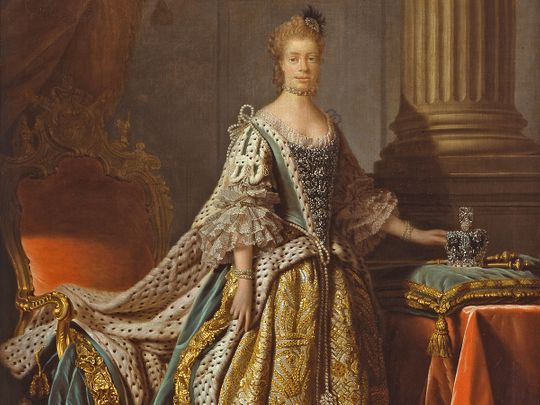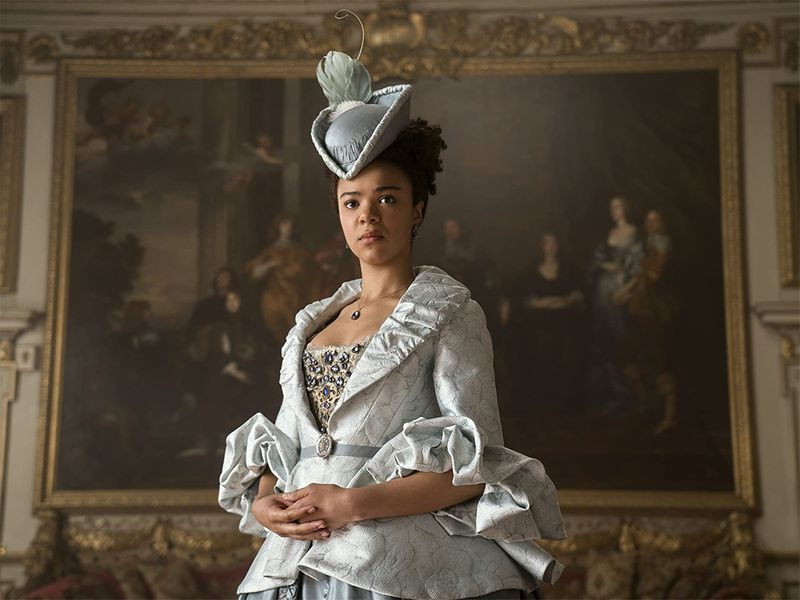
If you’ve spent even a few minutes watching Queen Charlotte: A Bridgerton Story on Netflix, you’ve likely asked yourself the question: Did Britain ever really have a Black queen?
Click start to play today’s Spell It, where we separate fact from fiction as we meet the ‘heroine’ of the show, Queen Charlotte.
The short answer to that question is – it’s still up for debate. Let’s lay out what we know. Who exactly was Queen Charlotte?
At one time, she was 17-year-old Sophia Charlotte of Mecklenburg-Strelitz, which was a duchy in north Germany. The princess had an unremarkable childhood, according to a May 2023 report in the National Geographic, and her family had neither political connections nor ambitious aims. But this would work in her favour in 1760, when George III’s grandfather died, making him the king of England.

Almost immediately, the hunt for a wife for the king began. He was unmarried – a cause for national alarm – and was advised to marry quickly so his line of heirs would be secured. Charlotte became the top contender for the position, since her lack of political connections meant the king could focus on British interests.
So, even though the couple had never met, George III’s emissary proposed marriage on his behalf in 1761 and Charlotte accepted. An arranged marriage took place just six hours after she arrived in England.
They made an odd pair. Charlotte spoke no English, and only met her husband on her wedding day – she was now the Queen of Great Britain and Ireland. But by all reports, the couple had an unusually happy marriage and George III was a devoted husband and father. Charlotte went on to have 15 children. Although she found companionship in her spouse, she often clashed with her mother-in-law over rules of formality in the aristocracy, and found court life to be difficult.
A year after their marriage, however, George III bought her a large country estate owned by the Dukes of Buckingham – it became known as Buckingham House, and later, Buckingham Palace. Informally called ‘Queen’s House’, it’s where Charlotte spent most of her time in comfortable domesticity. She would read, do needlework and play instruments. She was also fond of botany - an interest she shared with her husband - and spent large amounts of time in the gardens.
But the couple's happiness met a premature end in 1765, when George III began experiencing bouts of mental illness. It became so serious that his ministers proposed having Charlotte temporarily take the throne while the king was recuperating. Although the king recovered, he often experienced relapses, with mania, depression, hallucinations and convulsions. His ill health impacted the queen deeply. It is said that by 1789, the queen’s hair had turned completely white with stress.
Eventually, Charlotte’s son George IV took over the throne as regent.
The question remains – was the German princess from a provincial dukedom, who became the queen of England, actually a person of colour? Some believe she had Black ancestry, and point to her portraits, which depict ‘African features’. Historians, for decades, have debated whether Charlotte’s ancestral ties to Portuguese aristocracy mean she had brown skin. Still others think today’s conceptions of race are what’s driving the belief that she was black.
Since it’s impossible to know exactly what Charlotte looked like in real life, the question is always going to be up for speculation. But the fact remains that she is still remembered as a faithful wife, and a tragic figure connected with the king’s mental illness, at a time when lack of understanding and social stigma made it difficult for him to gain the kind of support he would have needed from caretakers and loved ones.
What do you think? Play today’s Spell It and tell us at games@gulfnews.com.







